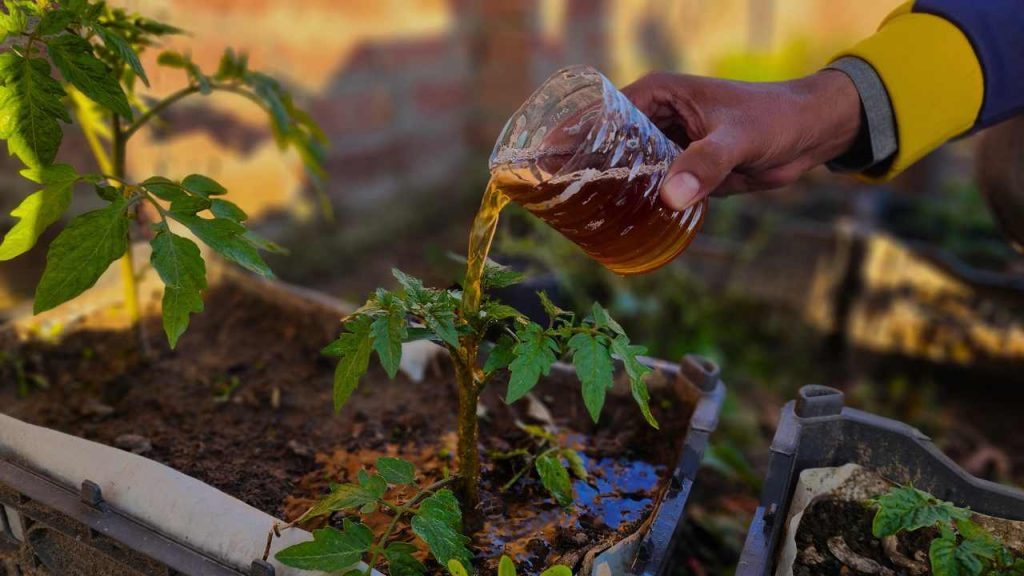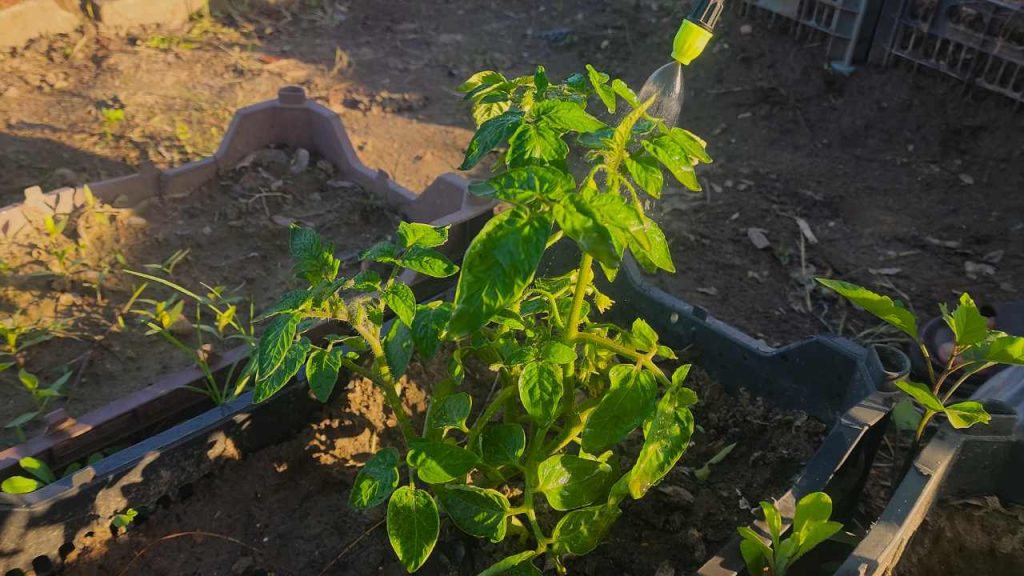Growing healthy and productive plants requires the right nutrients. While traditional fertilizers provide essential elements, natural solutions like seaweed liquid fertilizer offer even more benefits. This powerful organic booster helps plants grow faster, produce more flowers, and yield a greater harvest. It works for all types of plants, including vegetables, fruits, and flowers, making it a valuable addition to any garden.

What Is Seaweed Liquid Fertilizer?
Seaweed liquid fertilizer is made from marine algae, packed with nutrients that support plant growth. It contains essential minerals, trace elements, and natural growth hormones that improve plant strength and resilience. Unlike synthetic fertilizers, seaweed fertilizer works with nature to nourish plants without harming the soil or the environment.
Gardeners have used seaweed for centuries, recognizing its ability to enhance plant health. Today, seaweed extracts are available in liquid form, making them easy to use in gardens, farms, and even indoor plants. The natural compounds in seaweed stimulate root development, strengthen stems, and improve resistance to diseases and pests.
How to Prepare Seaweed Liquid Fertilizer
Using seaweed liquid fertilizer is simple and requires only a few steps. The process ensures that plants receive a balanced mix of nutrients that can be absorbed quickly.
Ingredients and Preparation
To prepare the mixture, start with clean water. Five liters of water is enough for a medium-sized garden. Add 50 milliliters of seaweed liquid fertilizer to the water and mix thoroughly. Stirring ensures that the nutrients are evenly distributed and ready for application.
This solution is now ready to be used in two ways: applying it to the soil or using it as a foliar spray. Both methods provide excellent benefits, and choosing the right one depends on the type of plant and its growth stage.
Applying Seaweed Fertilizer to the Soil
One of the best ways to use seaweed liquid fertilizer is by applying it directly to the soil. This method allows the roots to absorb the nutrients efficiently, providing long-term benefits for plant growth.
How to Apply
Pour the prepared seaweed solution near the base of the plants, ensuring that it soaks into the soil. This process delivers essential minerals to the roots, encouraging deeper and stronger root development. It also enhances microbial activity in the soil, helping plants access nutrients more easily.
This method is especially useful for young plants that are still developing their root systems. Regular application leads to stronger plants, improved water retention in the soil, and better resistance to drought conditions.
Benefits of Soil Application
- Stronger Root Growth – Seaweed fertilizer promotes deeper root systems, allowing plants to access nutrients more efficiently.
- Improved Soil Structure – It enhances soil health by increasing beneficial microbes that break down organic matter.
- Better Water Retention – The soil holds moisture for longer periods, reducing the need for frequent watering.
- Increased Plant Resistance – Plants become more resistant to diseases, pests, and environmental stress.
Using Seaweed Fertilizer as a Foliar Spray

Another effective way to use seaweed fertilizer is as a foliar spray. This method allows plants to absorb nutrients directly through their leaves, leading to faster results.
How to Apply
Transfer the prepared seaweed solution into a spray bottle or garden sprayer. Mist the leaves evenly, covering both the top and underside. The best time to spray is early in the morning or late in the evening when temperatures are cooler. This ensures that the leaves absorb the nutrients without the risk of evaporation.
Foliar spraying is ideal for plants that need an immediate nutrient boost. It is also useful for treating plants that show signs of stress, such as yellowing leaves or slow growth.
Benefits of Foliar Spraying
- Faster Nutrient Absorption – Leaves absorb nutrients quickly, providing immediate benefits to the plant.
- Increased Flower and Fruit Production – More flowers mean a higher chance of fruit development.
- Stronger Immunity Against Pests and Diseases – Plants build natural resistance to common garden problems.
- Enhanced Leaf Health – Greener, healthier leaves improve photosynthesis and overall plant energy.
Why Seaweed Fertilizer Is Better Than Chemical Fertilizers
Many gardeners rely on chemical fertilizers to improve plant growth, but these products can harm the soil in the long run. Seaweed liquid fertilizer offers a sustainable and eco-friendly alternative with multiple advantages.
- Natural and Organic – It does not contain harmful chemicals, making it safe for the environment.
- Improves Soil Health – Unlike chemical fertilizers that degrade soil over time, seaweed fertilizer enriches it.
- Non-Toxic for Plants and Beneficial Insects – It does not harm pollinators like bees or beneficial microbes in the soil.
- Long-Term Benefits – Regular use leads to healthier plants season after season.
How Often to Use Seaweed Liquid Fertilizer
The frequency of application depends on the type of plants being grown. For general plant health, applying seaweed fertilizer once every two weeks is sufficient. However, during the flowering and fruiting stages, it can be used weekly to maximize production.
For foliar sprays, it is best to apply every 10 to 14 days. Overuse is unnecessary, as the nutrients remain available in the soil and plant tissues for a long time.
The Impact of Seaweed Fertilizer on Different Plants
Vegetables
Vegetable plants respond exceptionally well to seaweed fertilizer. It strengthens stems, increases leaf growth, and boosts yields. Tomatoes, peppers, and leafy greens grow faster and produce more when regularly treated with seaweed extract.
Fruit Plants
Fruit-bearing trees and bushes benefit from the growth hormones in seaweed fertilizer. These compounds improve flower formation, resulting in higher fruit production. The potassium content in seaweed ensures that fruits develop better taste and texture.
Flowering Plants
For ornamental plants, seaweed fertilizer encourages more blooms and vibrant colors. Flowers last longer, and the plants become more resistant to pests and diseases.
